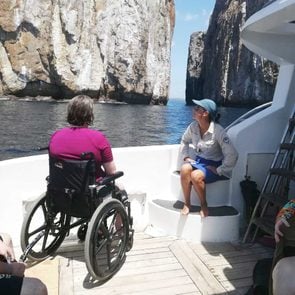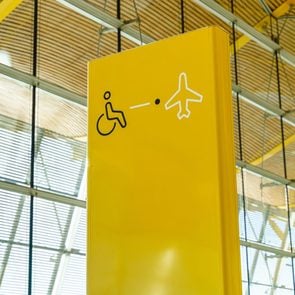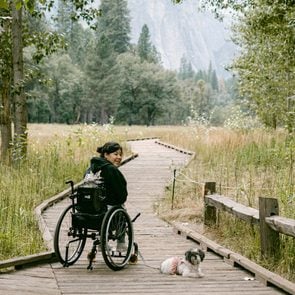I Stopped Hiding My Disability, and It Opened Up New Worlds
Updated: Mar. 14, 2024
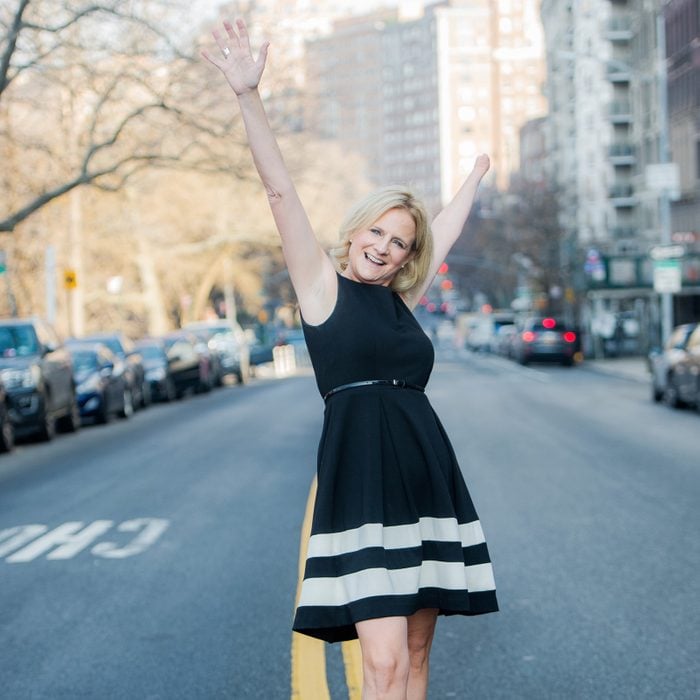
Everyone is hiding something—but embracing that secret part of yourself can change everything
My birth was a little more dramatic than the standard way a baby enters the world. Within minutes of coming out, I was whisked away into another room while doctors gave my parents the difficult news: I was born missing my left hand. I’m sure it was quite jarring for them. An entire hand was just … not there?
As surprising as it was at the time, it isn’t super rare: Every year, around 1 in 1,500 babies born in the United States has a “limb difference,” according to the CDC. Having extra fingers or toes is the most common limb difference. My form, called amniotic band syndrome, is more rare, occurring in 1 out of every 10,000 to 15,000 births. Regardless of the form the disability takes, these families have to learn all the ins and outs of navigating that disability—from finding accessible travel to building confidence in their kids—from day one.
Indeed, that announcement of my limb difference would come to define the rest of my life, and it might have been a disaster if it hadn’t been for what happened next. I’m told that a nurse bundled me up, took me back into the room, placed me in my mother’s arms and instructed: “You will take her home. You will love her. You will raise her like you would any child. You will treat her as normal.”
Which is exactly what happened.
Get Reader’s Digest’s Read Up newsletter for more diversity, humor, cleaning, travel, tech and fun facts all week long.
A normal childhood … sort of
My parents took that admonition seriously, and for the most part, it was great. I played sports, acted in theater, excelled in school, participated in student government and had playdates with friends. While I did get some stares and “polite” questions about my disability, I am lucky because I wasn’t made fun of for my limb difference.
As kids do, I quickly learned to adapt, working around the “missing” hand. One of my earliest memories is my father trying to teach me to tie my shoes. I gently nudged him out of the way because his two-handed method wouldn’t work for me, and I figured out a way to do it with one hand.
Not every challenge was that simple, however. Because my parents were trying so hard to make me feel “normal,” that also meant I didn’t really have space to talk about my limb difference—and it was different. No matter how we tried to reframe it, other kids had two hands and I had only one.
Why I started hiding my disability
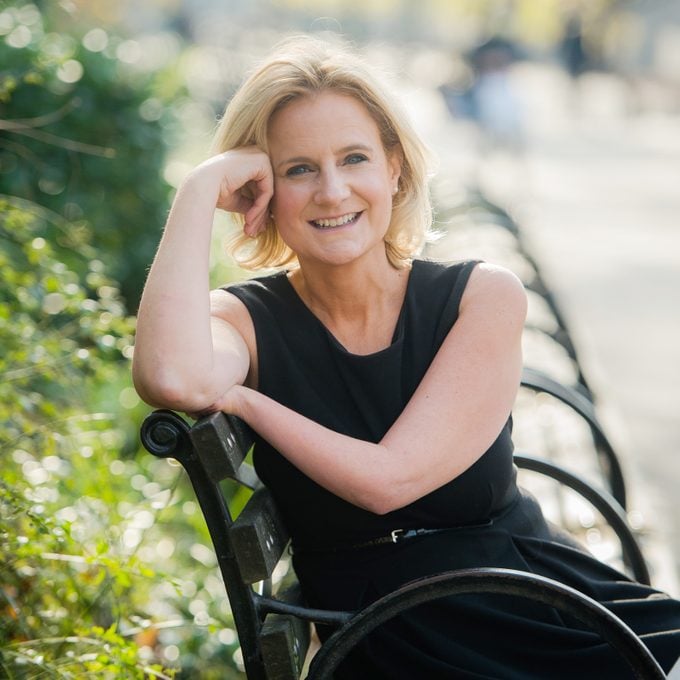
That fact that I was different hit me hard my first day of high school. I was 13, an age when kids are already very self-conscious and the need to fit in is magnified. I remember getting on the yellow school bus and one of the other kids stared just a little too long at my left arm. The staring unnerved me in a way it never had before, and I felt a sudden urge to hide my hand, so I impulsively slipped it into my pocket.
I told myself that I’d just hide it that one day, while I was trying to make friends. But one day of hiding turned into a week, which turned into a month, which became years—25 of them to be exact.
I spent the next two decades keeping my limb difference hidden at all times. I’d keep it in my pocket, cover it with extra-long sleeves or tuck it behind bags or underneath jackets. But the thing about hiding is that the very act implies there is something bad or wrong (or else why would you need to hide it?). In my mind, I had decided that my missing hand made me hideous and that if people knew about it they would be scared of me and not want to be around me anymore. I internalized this self-loathing, and it only strengthened over the years. Honestly, I was terrified that if I exposed my limb difference that people would find me as ugly as I found myself. I felt lonely and scared all the time.
Dating with a limb difference
Making friendships felt challenging enough, but trying to find love felt particularly daunting. As I started dating, I made deliberate efforts to hide my limb difference. Eventually we’d reach a point in the relationship where I knew I had to tell them. I’d agonize over the “big reveal” and build it up in my mind and theirs for days. I’d tell them, “There’s something I really need to tell you,” and then leave them to imagine what terrible thing I was hiding. When I had steeled myself, I’d call them on the phone and say abruptly, “I was born missing my left hand”—and then immediately hang up before they could respond. I’d wait in shame and fear for them to call me back (which they all did, to their credit), but even then, I couldn’t bear to talk about it, so I’d let it go to the answering machine and then listen to their message later.
Everyone I shared this with—friend, co-worker or boyfriend—took it well and said kind things like, “You shouldn’t hide it” or “It’s no big deal.” But their words didn’t matter to me. The only words that really mattered were the ones I was telling myself, that story of how I was awful and unworthy of love. Hiding feels a lot like lying, and it’s hard to build close relationships when you constantly feel like you’re lying to your loved ones. And the more you hide, the harder it becomes to stop hiding.
Why I stopped hiding my disability
Interestingly enough, it was a date that convinced me to stop hiding my limb difference.
When I was 38 years old, exhausted of hiding and so lonely, I met someone special and invited them in. The combination of me finally feeling ready to unhide and his willingness to go through the unhiding process with me was exactly what I needed. For the first time in my life, I allowed someone to really hold my limb, look at it, take pictures of it, touch it, love it—love me.
That relationship ended after 10 years, but I kept the self-love and compassion I learned from it. From that point on, I saw my limb difference as something unique and beautiful about me, something that should be shown, not hidden.
How unhiding my arm made everything in my life better
It was a transformational experience, and through that process, I learned to love me too. This ability to love myself changed how I lived my entire life, and it made me happier.
It started with physical care: For years, I’d gotten frostbite on my left hand every winter because I’d shove it so deep into my pocket that I wouldn’t feel it freezing. Unhiding it meant learning to take care of it—learning little things like how to keep it warm and protect it from the elements.
My relationships also improved. I learned that being comfortable with myself made other people more comfortable as well. Talking about my struggles gave them permission to talk about theirs too, and I was able to bond on a deeper level with a much larger group of people. I wasn’t lonely anymore.
I finally found my tribe. Because I wasn’t so focused on hiding myself, I started looking around me and noticing other people with limb differences. There are a lot of us! It was through one of these new friends that I discovered the Lucky Fin Project, an organization dedicated to people with all types of limb differences. I eventually joined the organization’s board to help raise awareness and more deeply advocate for my community.
My life’s purpose also became clear
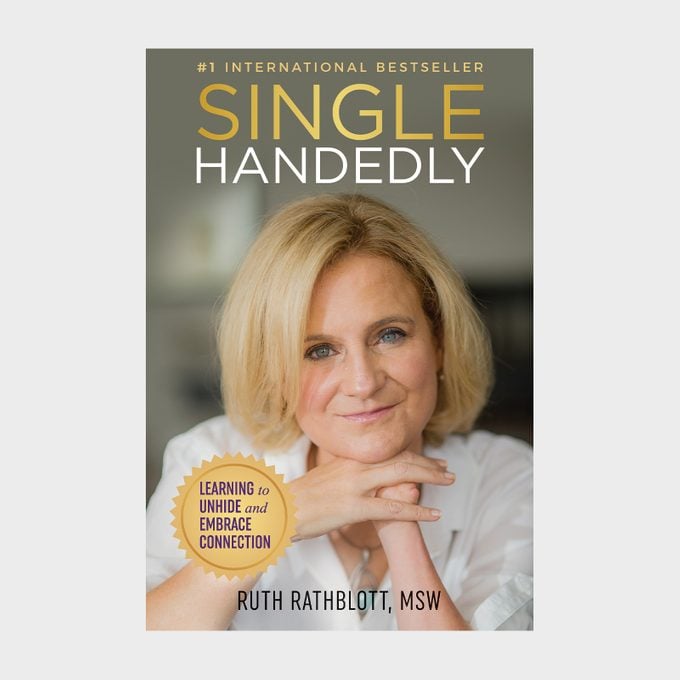
For 25 years, I’d worked in nonprofit organizations working with young people, but accepting my disability sparked a passion in me to educate others about disability as part of diversity, through public speaking and writing. I pivoted my career, and my mission now is to expand the conversation about disability and work with organizations so their employees can unhide and thrive.
Last year, I also wrote a book, Singlehandedly: Learning to Unhide and Embrace Connection. It focuses on my journey of hiding and learning to unhide, and the need for disability to be included in diversity conversations. Now, I’m building a global movement and community around unhiding.
What I wish everyone understood about disabilities
We often think of diversity in relation to race, gender and sexual orientation, and we often leave out the largest minority group: people with a disability. Diversity is about valuing different perspectives and experiences, and disabilities offer a beautiful and different perspective, yet we very rarely hear it.
Disabilities can be visible, like mine, or invisible, like mental health, neurodiversity or a chronic illness. And whatever form they take, they are life-changing—in positive and challenging ways. This is why it’s so important for people with a disability to be able to talk about it openly and why it’s so important for people without a disability to learn how to be an ally and an advocate. Here are a few steps you can take to do that.
Educate yourself
This starts with understanding and examining your own beliefs about disability. Challenge negative thoughts you have about people with different disabilities. Read books, listen to podcasts, watch shows or talk to others to understand their experience better. (Not sure where to start? Check out the resources guide on my website.)
Watch how you ask questions
Everyone’s curious about my missing hand—and curiosity is normal—but before you ask someone a question about their disability, ask yourself, Why do I need to know this? Are you asking out of kindness and a desire to support them, or is it to satisfy your personal curiosity? Examine your motives.
Be respectful of boundaries
Don’t make assumptions about people’s abilities. People with disabilities have learned to accommodate and adapt in ways you can’t even imagine. Ask how you can support someone instead of just taking over. And please respect physical boundaries—just because someone looks different, it doesn’t give us permission to touch their difference without permission.
Another thing to keep in mind? Not all disabilities are visible, so please don’t demand to know why someone has a disability placard on their car.
Everyone is hiding something
If I’ve learned one thing through my advocacy work, it’s that hiding is universal. My missing hand is just a tool to talk about it. One of the things I do in my workplace seminars is give each person a blank postcard, tell them to write what they are hiding and then (anonymously) mail it back to me. People have shared hiding mental-health issues, family challenges, abuse, financial problems, their age, their faith, political views, education status, addiction, neurodiversity, physical challenges—the list goes on and on. But they all start the same: “I’ve never told anyone this …”
Hiding things, especially from loved ones, is exhausting and isolating, and it prevents us from getting help and support. So why do we all do it? It’s that primal shame for being different and the fear of being rejected for our differences. It’s such a universal experience, yet we all feel like we can’t talk about it. It’s time to change that.
Unhiding can set you free
In my book, I describe four steps to unhide whatever it is you’re hiding:
- Acknowledge what you’re hiding. It’s harder than you think! Say it out loud. Write it down. But you can’t change something you don’t acknowledge.
- Invite someone in. Find a person you can talk to about what you’re hiding. There’s immense power in bringing it out of the dark—even if you just start with one other human being.
- Build your community. Go online—there’s a support group for everything, no matter how niche. It’s incredibly freeing to be able to recognize that you’re not the only one suffering this way and that others have done exactly what you’ve done to cope.
- Share your story. Be an example to others of unhiding. Share the freedom that comes with it. This becomes a positive loop, inspiring others who in turn inspire their loved ones.
Unhiding is the key to connection. When we do this, we create a beautiful safe space where everyone can feel seen and loved for who they are and know that they belong. Hiding holds all of us back—unhiding sets all of us free.
Ruth Rathblott, MSW, is a renowned diversity and inclusion speaker, nonprofit leader and TEDx speaker. She is also the author of the new book Singlehandedly: Learning to Unhide and Embrace Connection.
